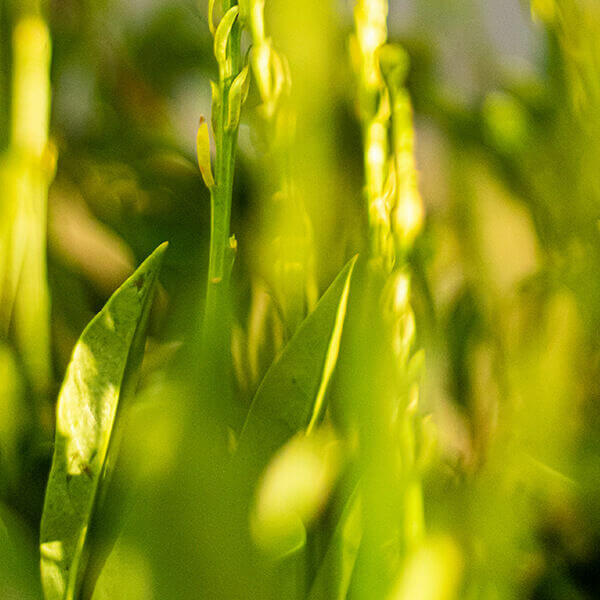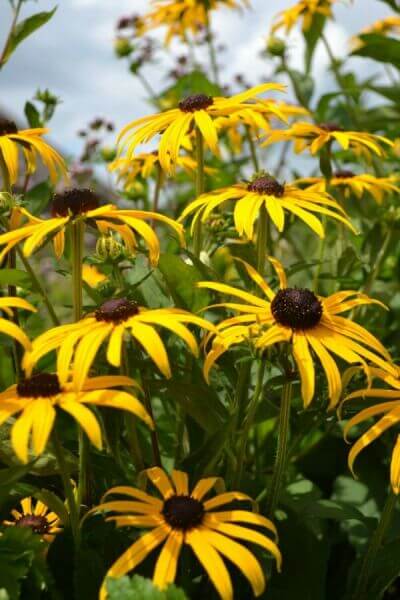Native Hedge Plants For Wildlife Gardens
Boost your garden's allure with lush hedge ranges such as Yew (Taxus), Thuja, Laurel, Photinia, and Bamboo, commemorated for their structural integrity and ecological advantages.
Yew and Thuja supply evergreen protection and winter durability, while Laurel offers fast development and broad, fragrant leaves.
Photinia adds seasonal beauty with its vibrant red foliage, and Bamboo provides a low-maintenance, tranquil ambiance.
These hedges enhance air quality, lower noise, and produce tranquil, personal areas.
Proper planting, spacing, and upkeep make sure vigorous growth and environmental consistency.
Explore how these rich ranges can raise your garden's beauty and well-being.
Key Takeaways
Change Your Garden With Lush Hedge Varieties
- Select Yew for its dense, evergreen development and unequaled durability.
- Go with Laurel for its fast growth and broad leaves, ensuring fast personal privacy.
- Choose Photinia for its vibrant seasonal foliage, which turns a striking dark red.
- Use Bamboo for a low-maintenance, winter-hardy hedge with aesthetic appeal.
- Space plants 2-3 per meter and prune routinely for optimal growth and health.
Popular Hedge Plants
When transforming a garden with lush hedge ranges, it's vital to consider popular hedge plants such as Yew, Thuja, Laurel, and Photinia due to their distinct qualities and advantages.
Yew (Taxus) is extremely respected for its longevity and dense, green growth, making it a prime choice for enduring landscapes.
Thuja is noted for its evergreen foliage and robust winter resilience.
Photinia includes seasonal vibrancy with red leaves that darken over time, creating vibrant visual appeal.
Laurel uses quick development and aromatic, broad leaves, suitable for quick privacy.
Additionally, Bamboo is an excellent option for atmosphere, providing a low-maintenance, winter-hardy choice that improves the garden's aesthetic with its sophisticated, swaying canes.
These selections cater to a variety of horticultural requirements and choices.
Advantages of Garden Hedges
Garden hedges provide a wide variety of benefits, making them a valuable addition to any landscape. These natural barriers are cost-effective to implement and supply substantial wind security, enhancing air circulation and adding to sound reduction. The thick foliage of hedges like Thuja and Beech guarantees privacy by obstructing presence, creating a remote and peaceful environment.
Hedges also play a crucial function in microclimate regulation, supplying a steady environment that promotes plant development and reduces temperature level changes. Their complex leaf structures filter pollutants, enhancing air quality and contributing to a much healthier garden ecosystem.
Furthermore, hedges master sound reduction, taking in and deflecting sound waves to lower ambient sound levels. This dual performance of providing both acoustic and visual privacy improves the total tranquility and visual appeal of any garden.
Planting and Maintenance Tips
For an effective hedge, meticulous preparation of the planting area is vital. Ensure the soil has appropriate pH and drain to support strong root development.
Space the plants properly for the picked species. Water the hedge often throughout its preliminary development phase, changing as needed with seasonal changes.
Carry out a systematic insect control and illness avoidance method, using chemical or natural treatments when necessary. Routinely check for aphids, termites, and fungal infections.
Apply mulch to retain wetness and suppress weeds. Seasonal pruning promotes thick development and air circulation, important for plant health.
Following these guidelines will help you cultivate a dynamic, properly maintained hedge that boosts the beauty of your garden.
Spacing and Trimming Guidelines
Spacing and Trimming Guidelines
Proper spacing and trimming are essential for cultivating healthy, visually appealing hedges. Sufficient spacing makes sure each plant gets enough nutrients, light, and air flow.
Follow these standards for ideal hedge upkeep:
- Spacing: Position hedge plants 2-3 plants per meter to encourage robust growth.
- Pruning Techniques: Regular pruning is essential for maintaining desired hedge height and shape. Trim new development in summer and cut back older wood throughout winter season.
- Seasonal Care: Change trimming schedules and methods according to seasonal requirements to make sure plant health.
- Hedge Height: Regularly display and cut to keep the wanted hedge height and attain consistent looks.
Abiding by these steps will ensure your hedge thrives, boosting both the appeal and performance of your garden.
Selecting the Right Hedge
Choosing the Right Hedge
Choosing the proper hedge includes evaluating aspects such as fully grown height, foliage density, and environmental resilience. Successful hedge plant choice needs understanding each types' growth attributes and site-specific flexibility.
For example, Yew (Taxus) offers outstanding longevity and dense development, while Thuja is noteworthy for its winter season durability. In addition, considering upkeep requirements is essential; fast-growing types like Laurel or Privet demand routine trimming, whereas low-maintenance alternatives like Bamboo or Ivy might be preferable for those looking for very little upkeep.
Ecological factors such as soil type, light schedule, and moisture conditions must likewise direct the choice process. This mindful technique guarantees the picked hedges will flourish, supplying both aesthetic and practical advantages to the garden landscape.
Delivery and Planting Advice
To guarantee your hedge plants grow, they ought to be provided by specialized carriers and planted promptly upon arrival.
Follow these important actions for effective planting:
- Soil Preparation: Enhance the soil with raw material to enhance drainage and nutrient material.
- Planting Depth: Create a trench twice the width and equivalent to the depth of the root ball.
- Watering Strategies: Water thoroughly after planting, keeping the soil consistently damp however not filled.
- Mulching: Use a layer of mulch to retain moisture and reduce weeds.
Customer Support and Service
Provided the important function of prompt help in horticultural pursuits, our customer support team is available 6 days a week through telephone, e-mail, and social media to offer professional recommendations and quickly attend to any issues. Their devotion to fast action times makes sure customer complete satisfaction by resolving queries related to plant health, optimal planting methods, and upkeep schedules.

Action Time
-------------------
Within Additional reading 24 hours
This detailed support group, reinforced by an outstanding 9.3/ 10 client ranking, highlights our dedication to boosting the gardening experience for every single customer.
Regularly Asked Concerns
How Long Does It Take for Hedge Plants to Establish?
Hedge plants generally require one to 3 years to end up being totally developed, with the specific period differing by species and growing conditions.
Effective care throughout this important duration is necessary for robust development. Constant watering, watchful weed control, and suitable fertilizer application are critical in promoting strong root development.
For example, fast-growing types like Laurel might develop more rapidly, while slower-growing varieties such as Yew may take longer. Persistent maintenance accelerates the facility procedure, leading to dense and healthy hedges.
What Are the Finest Hedge Plants for Personal Privacy?
The question of the best hedge plants for privacy involves assessing evergreen and deciduous choices.
Evergreen hedges like Thuja, Laurel, and Cypress offer year-round coverage, making sure constant privacy.
In contrast, deciduous hedges such as Beech use seasonal personal privacy, shedding leaves in colder months.
Secret maintenance suggestions for privacy hedges include regular trimming, fertilizing in spring, and appropriate spacing-- normally 2 to 3 plants per meter.
Furthermore, constant watering and persistent weed elimination are vital for promoting healthy, thick development.
Can Hedge Plants Draw In Wildlife to My Garden?
Yes, hedge plants can draw in wildlife to your garden by offering important benefits like shelter, food, and nesting sites, thereby enhancing local biodiversity. Yew, holly, and laurel are exceptional for bring in birds, while ivy supports a range of bugs.
However, it is essential to note that there are some drawbacks, such as increased maintenance to handle insects and regular maintenance. Thoroughly choosing and keeping hedge ranges can assist stabilize these benefits and drawbacks, ultimately cultivating a dynamic and sustainable environment in your garden.
Exist Any Flowering Hedge Plants Available?
Yes, there are flowering hedge plants readily available that can improve the beauty of your garden.
For instance, Elaeagnus, also understood as Olive Willow, produces fragrant white flowers in the fall, including a touch of elegance.
Photinia, another popular option, showcases vibrant red leaves that grow into a rich green, developing a dynamic visual result throughout the seasons.
To guarantee these plants grow, it's vital to practice proper pruning methods and seasonal upkeep, such as trimming new growth in the summertime and cutting down in the winter.
These procedures will assist maintain the health and visual appeal of your blooming hedges.
How Do I Prevent Insects in My Hedge Plants?
To avoid pests in hedge plants, utilize natural bug control approaches and maintain appropriate hedge care. Present helpful insects like ladybugs, which take advantage of damaging pests, to produce a well balanced environment.
Regularly examine your hedges for signs of problem and promptly remove any affected parts to prevent the spread. Guarantee the health of your hedges by applying balanced fertilizers and providing appropriate water.
Utilize mulching to keep soil wetness and correct spacing to lower plant tension and promote robust development. These practices jointly assist in decreasing bug concerns and maintaining a healthy hedge.
Conclusion
In essence, choosing the right hedge ranges such as Yew, Thuja, and Laurel can change any garden into a serene sanctuary. These plants offer year-round greenery, enhance aesthetic appeal, and offer practical advantages like noise reduction and wind protection.
Proper planting strategies, precise spacing, consistent watering, and seasonal trimming are vital for optimum development.
Trusted shipment services and professional client support make sure a smooth experience from purchase to planting, making it simpler than ever to elevate your outside space.
Garden hedges offer a plethora of benefits, making them a valuable addition to any landscape. These natural barriers are cost-efficient to execute and provide substantial wind security, enhancing air blood circulation and contributing to noise decrease. The dense foliage of hedges like Thuja and Beech makes sure privacy by blocking exposure, creating a tranquil and secluded environment.

Pruning Strategies: Routine pruning is vital for preserving preferred hedge height and shape. Trim new development in summertime and cut back older wood during winter.